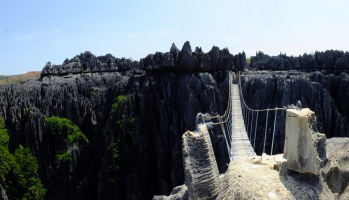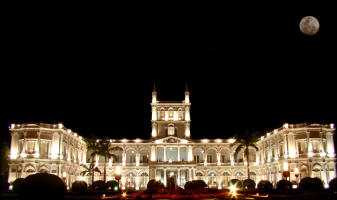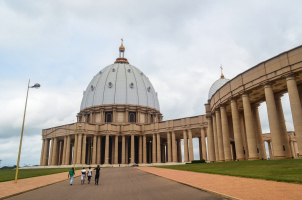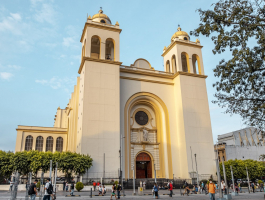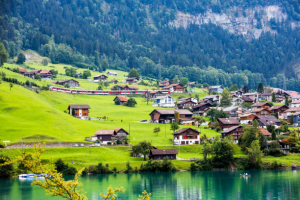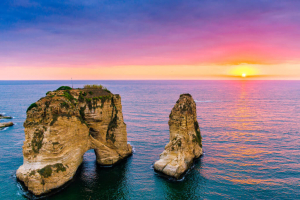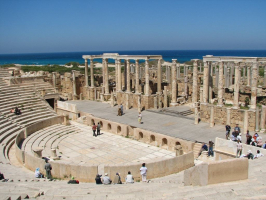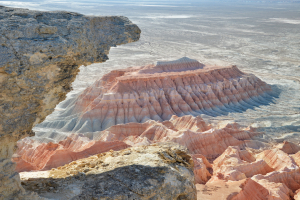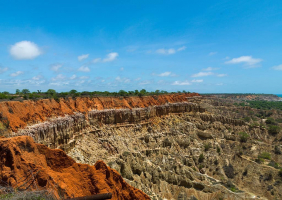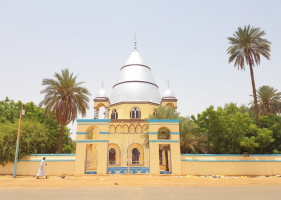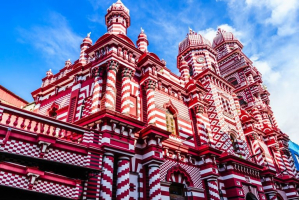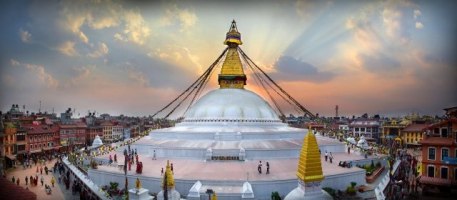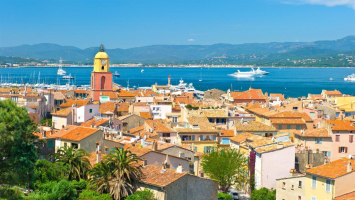Top 10 Best Places to Visit in Dublin
Dublin is one of the most diverse cities in Europe, with a wealth of art, culture, and personality to fill a month's worth of travel plans and still leave you ... read more...wanting more. The Irish capital nevertheless has a small-town vibe that never fails to fascinate despite its variety. Learn more about the top 10 Best Places to Visit in Dublin that you should not miss.
-
The Little Museum of Dublin is a local history museum situated at St Stephen's Green, Dublin, Ireland. Dublin City Council owns the Georgian mansion where the museum is housed, which dates to the 18th century. One of the city's historical attractions, The Little Museum of Dublin, is nestled away in a picturesque location. It is a must-see for anyone interested in learning more about how Dublin and its inhabitants have changed over the past century. Fusilier's Arch is a short distance away from the top of Dawson Street, where you may find it.
Over 5,000 artifacts that have been directly contributed or lent to the museum by Dubliners make up its collection. The Georgian townhouse contains office space on the first level and three floors of exhibition space. The museum features exhibits on the 1916 Rising, President John F. Kennedy's visit to Dublin, as well as a number of other significant political and social events in Irish history. Dedicated to the rock group U2, the museum unveiled an exhibition in 2014.
Google rating: 4.6/5.0
Address: 15 St Stephen's Green, Dublin 2, Ireland
Phone number: +353 1 661 1000
Official site: http://www.littlemuseum.ie/
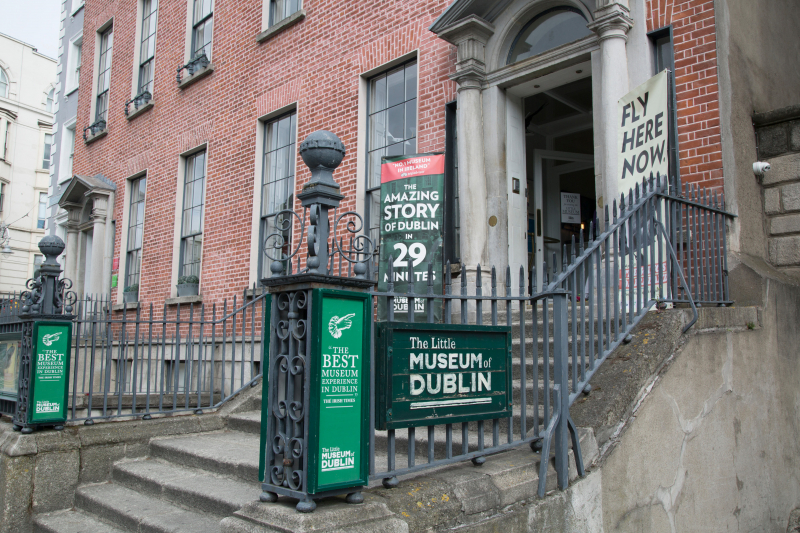
theculturetrip.com 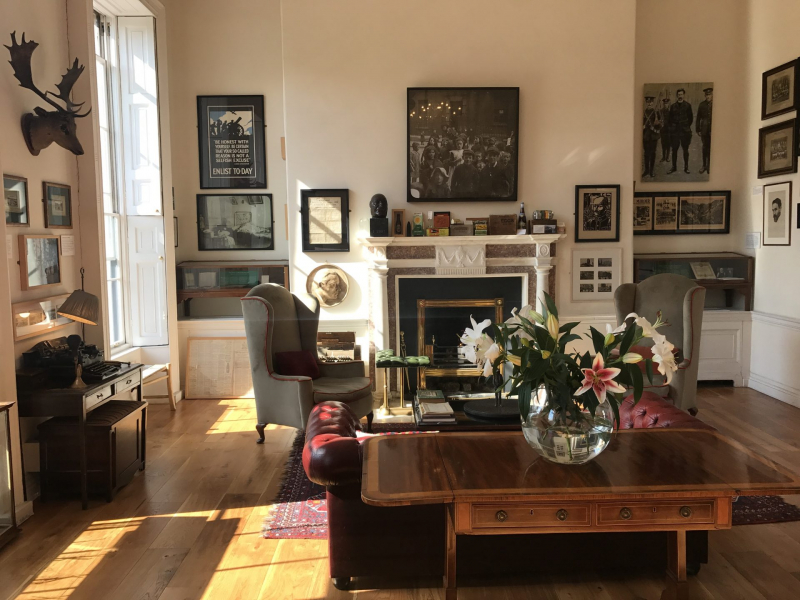
everybodyhatesatourist.net -
The National Museum of Ireland - Archaeology is a division of the National Museum of Ireland with a Kildare Street location in Dublin, Ireland. It specializes in Irish and other antiquities from the Stone Age to the Late Middle Ages. The Science and Art Museum Act of 1877 authorized the establishment of the museum. The Royal Dublin Society and the Natural History Museum on Merrion Street previously shared their holdings. Thomas Newenham Deane and Thomas Manly Deane, a father and son team of architects, constructed the museum.
Bog corpses, Iron and Bronze Age artifacts such axeheads, swords, and shields in bronze, silver, and gold, with the earliest dating to around 7000 BC, are all included in the NMI's collection of prehistoric Irish antiquities. Irish medieval art from the post-Roman era is housed there in the largest collection in the world. In addition, it contains a sizable collection of medieval metalwork, Viking artifacts like swords and coins, and classical items from the ancient worlds of Egypt, Cyprus, and Rome. The exquisite Ardagh Chalice is part of the Treasury collection, making it worthwhile to go there as well. This top-tier museum also offers tours, a robust schedule of workshops, and educational events. It is frequently listed as one of the best free things to do in Dublin.
Google rating: 4.6/5.0
Address: Kildare St, Dublin 2, Ireland
Phone number: +353 1 677 7444
Official site: https://www.museum.ie/en-IE/Museums/Archaeology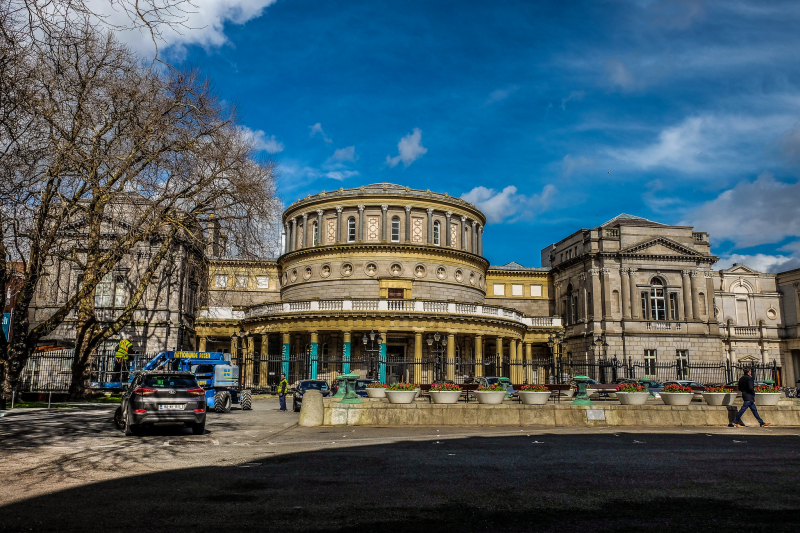
guide-ireland.com 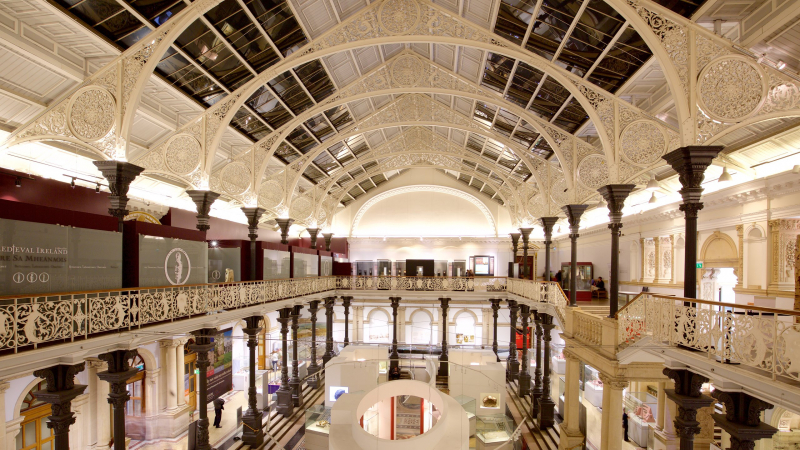
expedia.com -
Irish and European art are featured in the nation's collection, which is kept at the National Gallery of Ireland. With two entrances—one on Clare Street next to Leinster House and one on Merrion Square—it is situated in the city's center. Ten years after its 1854 founding, it began operations. The gallery is renowned for its Dutch masters' and Italian Baroque paintings in addition to having a large, comprehensive collection of Irish artwork.
This must-see attraction is a must-see when in the capital since it houses the finest collection of Irish art in the entire world as well as an exceptional collection of European art spanning the Middle Ages to the present. The gallery's wings were first erected in 1903, then in 1968, and most recently in 2002. It was opened in 1864. Italian Painters, the Shaw Room, the Baroque Room, the Yeats Museum, and seven rooms devoted to Irish art are among the collections. The gallery, which has four levels, usually holds stunning temporary exhibitions. It also has a great café that both residents and tourists enjoy.
Google rating: 4.6/5.0
Address: Clare Street & Merrion Square, Dublin 2, Ireland
Phone number: +353 1 661 5133
Official site: http://www.nationalgallery.ie/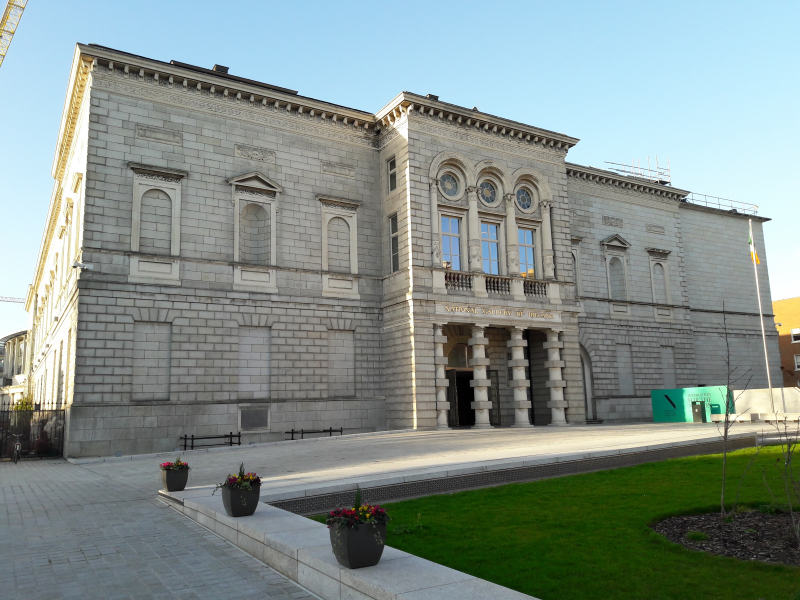
wikipedia.org 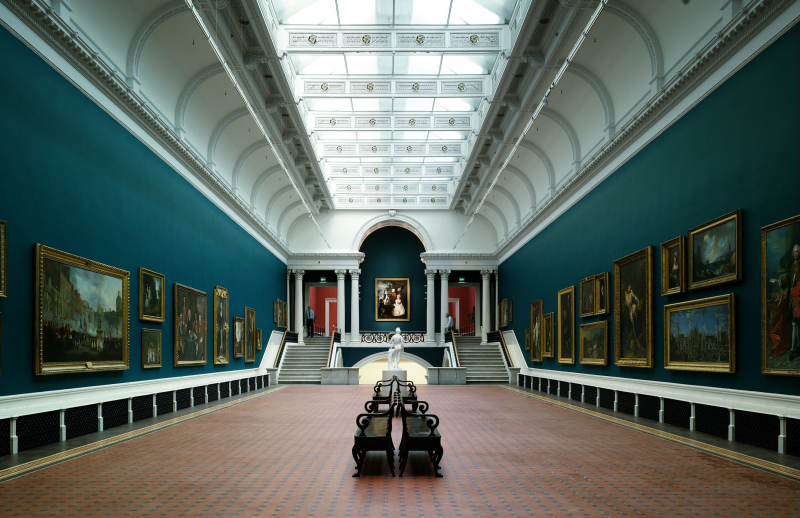
arthistoryproject.com -
The Irish have left their mark all across the East Coast of the United States if you only scratch the surface. Dublin's superb EPIC The Irish Emigration Museum is aptly situated in the city's docklands area, the scene of many a sad farewell. This intriguing museum, which opened in 2016, provides a thorough - and frequently moving - overview of Irish emigration throughout history. There are more than 20 different themed galleries in total, covering not only the history of Irish immigration but also the impact these vibrant people have had on the locations they have settled.
If you have time, you can visit the Irish Family History Centre for tools, assistance, and suggestions on tracing your family history. The Jeanie Johnston: An Irish Famine Story is a connected tourist destination close by. An exact copy of the legendary Jeanie Johnston, a Canadian sailing ship built in 1847 and used to convey countless thousands of Irish people over the Atlantic, serves as the focal point of this superb museum.
Google rating: 4.6/5.0
Address: The Chq Building, Custom House Quay, North Dock, Dublin 1, Ireland
Phone number: +353 1 906 0861
Official site: https://epicchq.com/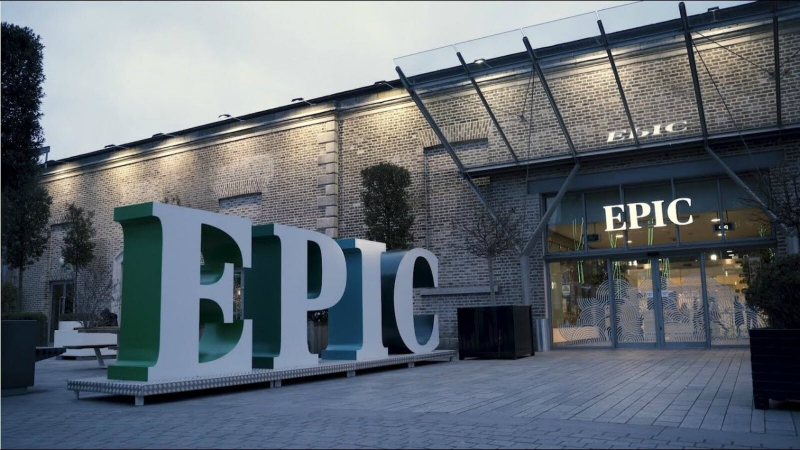
westcountyhotel.ie 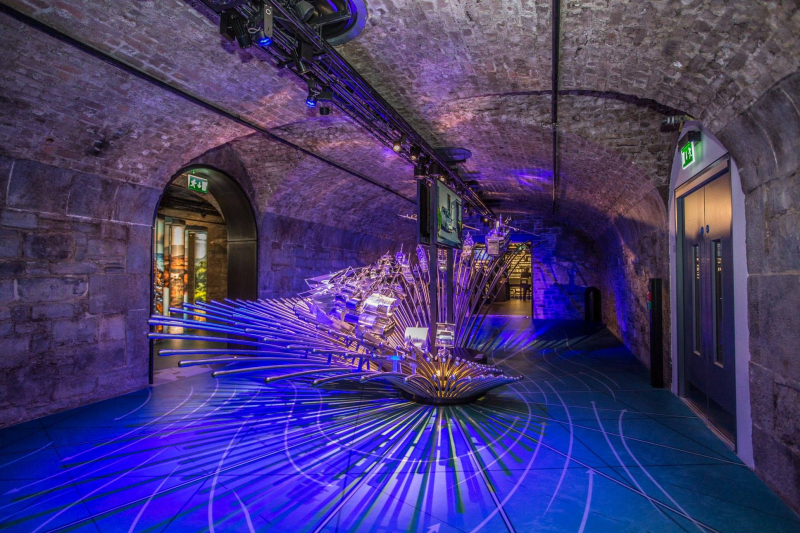
tagvenue.com -
Dublin Zoo at Phoenix Park is located 18 minutes walk from Collins Barracks. Given that Dublin is a relatively tiny capital city, it is remarkable that this 1,750-acre park is the largest enclosed urban park in Europe. Along with Deerfield, a lovely 18th-century estate where the American Ambassador to Ireland resides, the President of Ireland's official residence, and hundreds of deer wander the parkland here. For anyone interested in learning more about the park and its surroundings, there is a visitor center nearby Ashtown Castle, a 17th-century tower house.
Farmleigh House, a majestic home built in the 1800s and located on around 78 acres at the far end of Castleknock Gate, was acquired by the Irish government from the Guinness family in 1999. Dublin Zoo, the second-oldest zoo in Europe with a history dating back to 1830, is the principal attraction for generations of Dubliners and visitors from overseas. It draws more than one million visitors annually. A visit to the zoo is a fun activity in and of itself. There are a variety of other uncommon and exotic creatures present, including Asian lions, Asian elephants, a reptile house, an enclosure for orangutans, sea lions, tigers, hippos, bats, and penguins. There are dining options, playgrounds for children, and a family farm.
Google rating: 4.6/5.0
Address: Saint James' (part of Phoenix Park), Dublin 8, Ireland
Phone number: +353 1 474 8900
Official site: http://www.dublinzoo.ie/
thespencerhotel.com 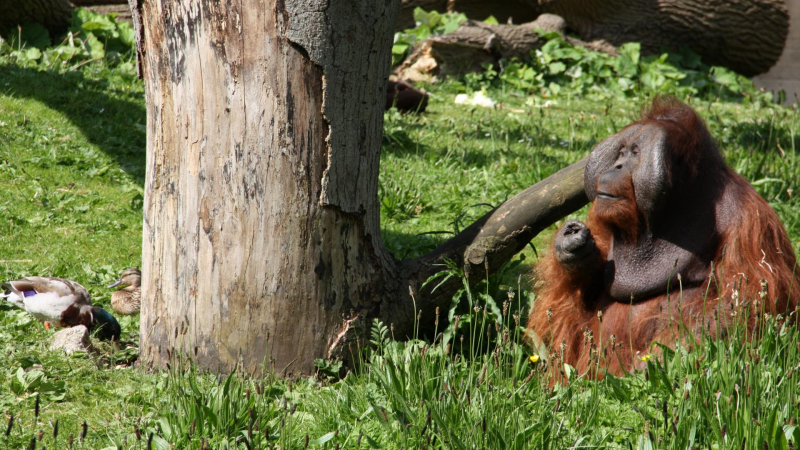
pembroketownhouse.ie -
Christ Church Cathedral ranks 8th in the list of best places to visit in Dublin. Christ Church Cathedral, which was renovated in the 19th century and dominates the neighborhood, was constructed on the site of Dublin's first wooden church, which was established in 1028. Beautiful early Gothic arches may be found in the Great Nave, where you can also find a 14th-century facsimile of the renowned Norman conqueror Strongbow's tomb (who is actually buried elsewhere in the cathedral).
The adjacent portion, known as "Strongbow's son", is thought to have been a component of the original tomb. A portion of the enormous crypt that runs the length of the structure is from the thirteenth century. Dublinia, a top-notch historical reproduction of life and events from the Viking to the medieval era, is also well worth a visit. It is situated in the cathedral's Synod Hall. Highlights include numerous buildings, authentic street scenes, and dressed actors showing customs and activities from the time.
Google rating: 4.5/5.0
Address: Christchurch Pl, Wood Quay, Dublin 8, Ireland
Phone number: +353 1 677 8099
Official site: https://christchurchcathedral.ie/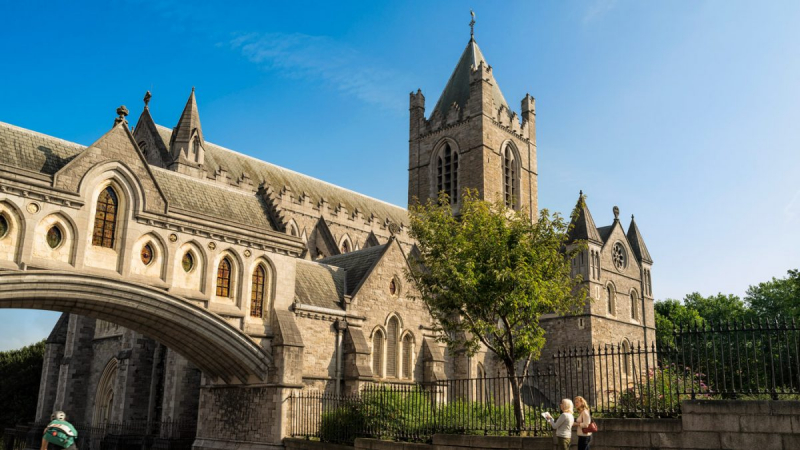
libertiesdublin.ie 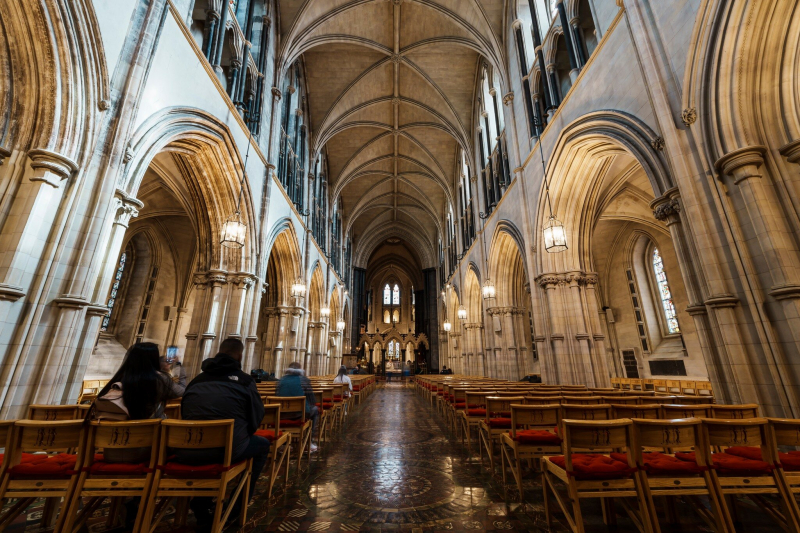
welove-dublin.com -
St. Patrick's Cathedral ranks 9th in the list of best places to visit in Dublin. St. Patrick's Cathedral, the national cathedral of the Church of Ireland, may be reached by foot in just seven minutes from Christ Church Cathedral. According to tradition, in AD 450, St. Patrick baptized local Christians who had converted to Christianity. The original building was made of wood, similar to Christchurch. A second, stone-built church was established in 1192. A second reconstruction was completed a little over a century later, elevating it to the status of a cathedral.
Many adornments have been added over the years, primarily in the mid-1700s when the spire was constructed and in the late 1800s when there were significant renovations. Jonathan Swift (1667–1745), author of Gulliver's Travels and satirist, is buried next to his longtime love "Stella" in a tomb to the right of the entry. He served as Dean of St. Patrick's for 35 years (Hester Johnson 1681-1728).
Google rating: 4.5/5.0
Address: St Patrick's Close, Dublin, Ireland
Phone number: +353 1 453 9472
Official site: http://www.stpatrickscathedral.ie/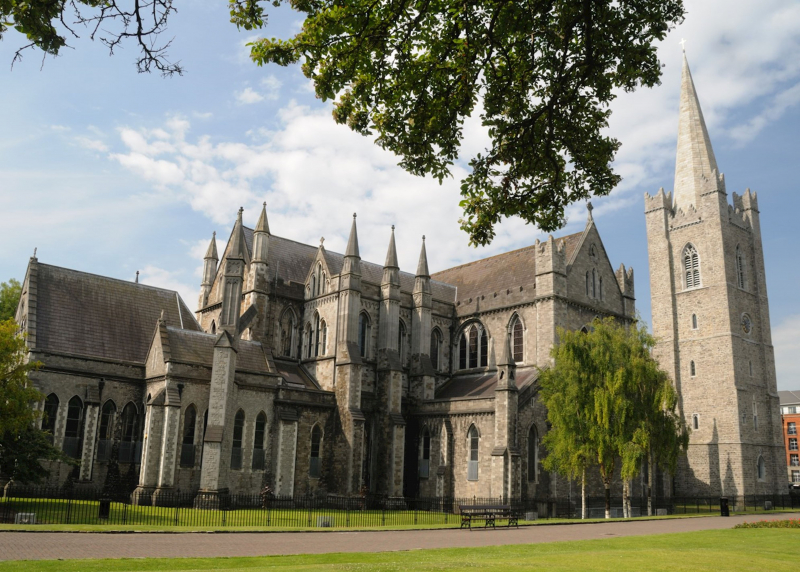
audleytravel.com 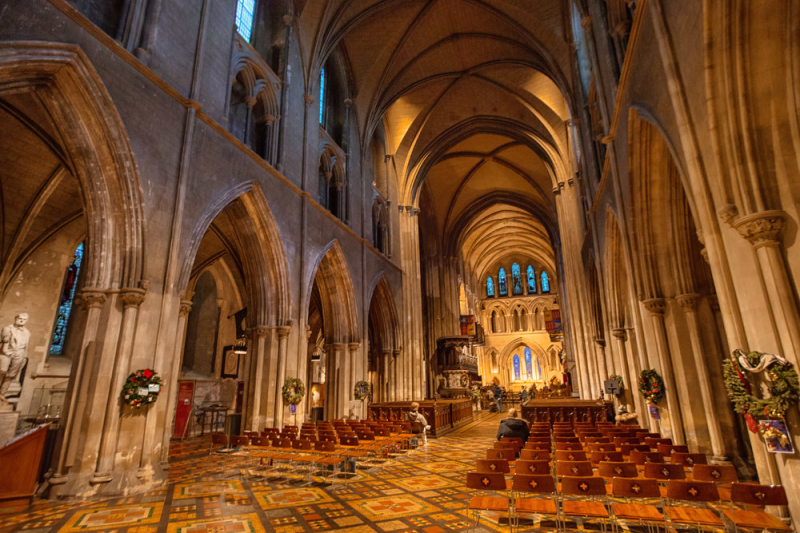
goteamjosh.com -
The ideal starting point for your Dublin tour is likely Trinity College. The oldest university in Ireland, it is situated in the center of the capital and was established in 1592 by Queen Elizabeth I. It is also incredibly rich in history. Trinity is renowned across the world for its collection of priceless artifacts and sits on an enviable 40-acre location that still has part of its historic isolation of cobbled squares, gardens, and parks. The Book of Kells, the Books of Durrow and Armagh, an ancient Irish harp, and the illuminated manuscript from the ninth century are among those that are always on display.
Trinity is a refuge in a busy neighborhood. You suddenly feel like you've traveled back in time as you enter through a timber-tiled archway. The spotless lawns, 18th and 19th-century structures, and cobbled streets evoke a genteel time and exude a sense of quiet academia. It's wise to plan your visit ahead of time because buildings that are accessible to the general public can get busy during the busy season. Do set aside time to unwind and merely take in the surroundings in addition to seeing the must-see attractions.
Google rating: 4.5/5.0
Address: Trinity College, College Green, Dublin 2, Ireland
Phone number: +353 1 896 1000
Official site: https://www.tcd.ie/visitors/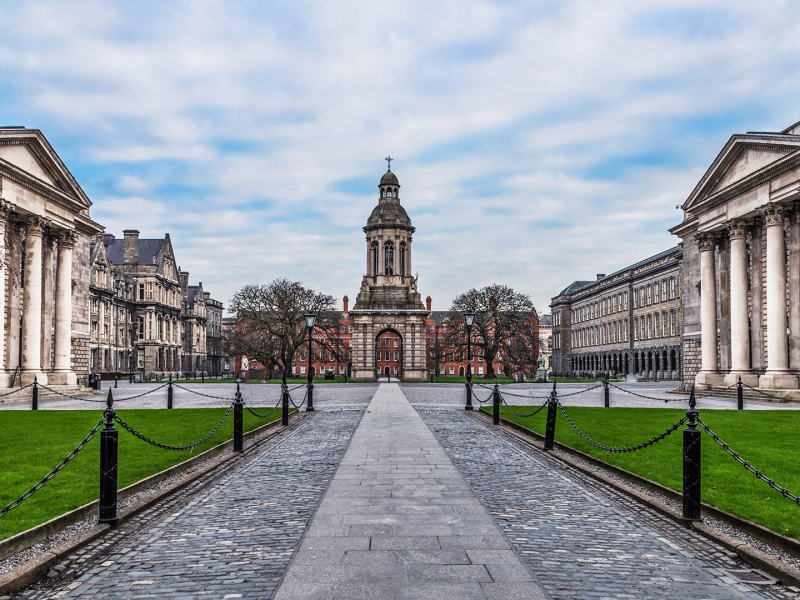
coindesk.com 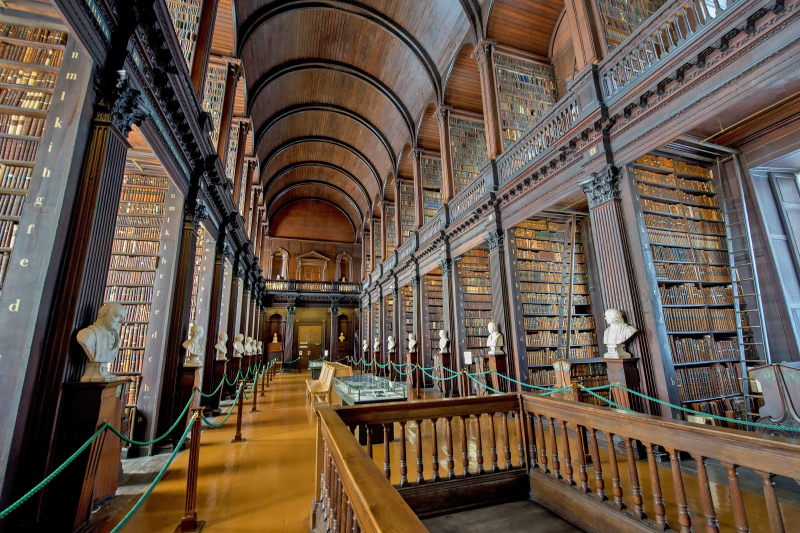
vi.hotels.com -
The James Joyce Centre, established by Irish senator, former presidential candidate, and eminent Joycean scholar David Norris, is located about eight minute's walk from the GPO in a lovely Georgian home. Although James Joyce never resided on the grounds of the museum, which is devoted to all things Joycean, he had a link to it because of Prof. Denis J. Maginni, a real-life figure who conducted a dance school there and was mentioned in the novel Ulysses. Following a David Norris-led campaign, the 1980s-era structure that had been condemned was ultimately rescued and rebuilt.
The Dublin Writers Museum is a must-visit if you want to understand more about Dublin's rich literary history. This intriguing museum, housed in a charming 1700s residence in Parnell Square, provides a fascinating look into the lives of some notable Irish authors as well as their most significant writings. The museum displays a collection of paintings and portraits in addition to other antiques and mementos.
Google rating: 4.2/5.0
Address: 35 N Great George's St, Rotunda, Dublin, Ireland
Phone number: +353 1 878 8547
Official site: http://jamesjoyce.ie/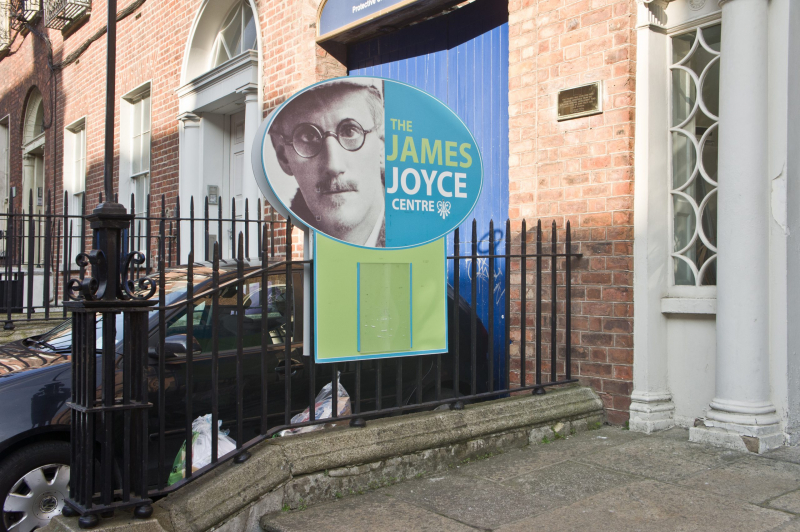
guide-ireland.com 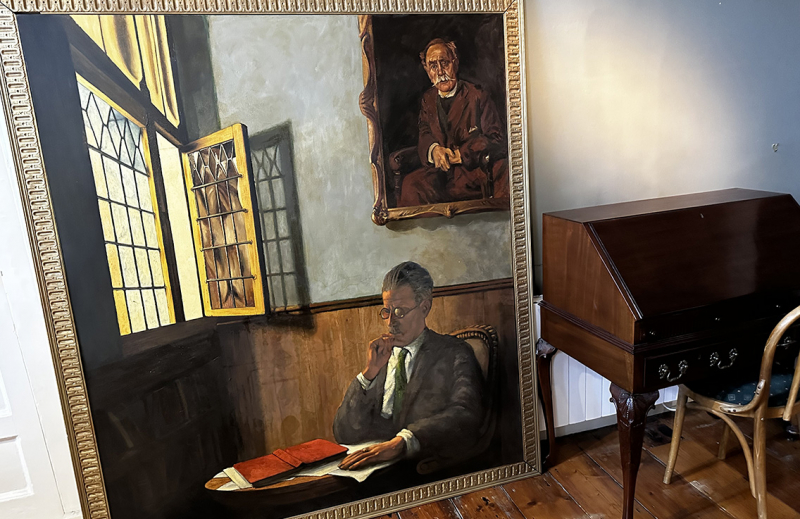
femalesolotrek.com -
Formerly a Motte-and-bailey castle, Dublin Castle is now Ireland's government complex and convention venue. It was chosen because of its location at the highest point in the city of Dublin. The dark lake (Dubh Linn), which gave Dublin its name, was used to construct the fortress. When the castle was erected, the Liffey was much bigger, and the castle was effectively defended by both rivers. This pool is located on the lower course of the River Poddle before it meets the River Liffey.
Throughout the 700 years of British rule up until 1922, Dublin Castle served as the location of the national government. The castle has served as a government building as well as a vice-regal court and medieval stronghold. Silken Thomas, an Irish rebel who was known for wearing expensive clothing, attacked and besieged the castle in 1534. The castle is primarily utilized today for formal gatherings, exhibits, and even concerts. Visitors can explore the magnificent state apartments as well as a variety of institutions, including the Chester Beatty Library and Gallery.
Google rating: 4.2/5.0
Address: Dame Street, Dublin 2, Ireland
Phone number: +353 1 645 8800
Official site: http://www.dublincastle.ie/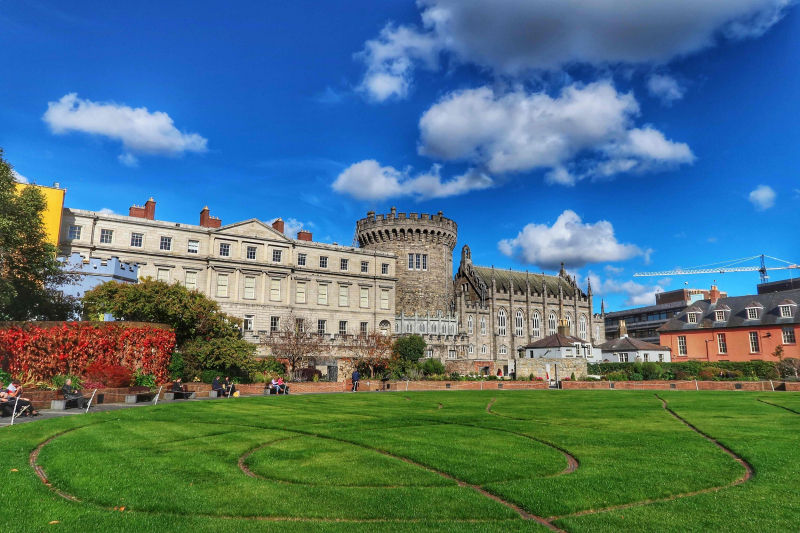
attitudedrivenadventure.com 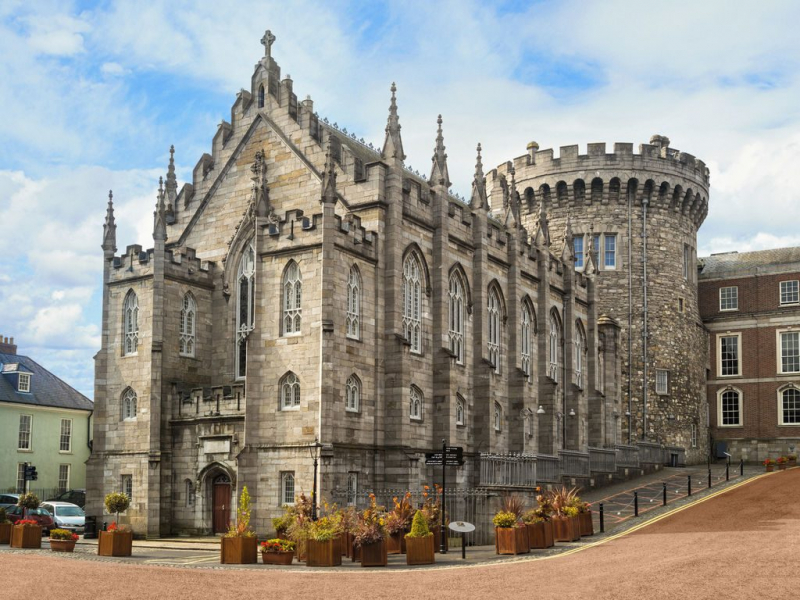
seda.college














